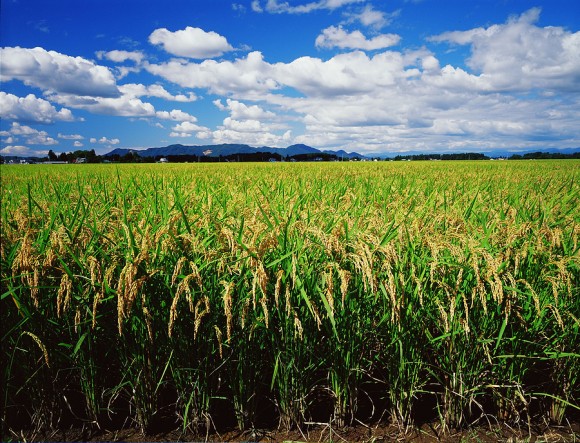A cap on crop insurance premium subsidies could save the federal government up to $1 billion a year, according to a government report.
If a limit of $40,000 had been applied to individual farmers’ crop insurance premium subsidies, as it is for other farm programs, the federal government would have saved up to $1 billion in crop insurance program costs in 2011, the report said.
Sen. Tom Coburn, Republican of Oklahoma, requested the report from the Government Accountability Office (GAO), the research arm of Congress.
Crop insurance helps farmers cover for poor yields and price declines. In 2011, the program provided about $113 billion in insurance coverage for more than 1 million policies.
The U.S. Department of Agriculture administers the program with private insurance companies. Private insurers sell the policies while the federal government pays about 60 percent of the premium and covers the participating private insurers’ operating costs. According to the Congressional Budget Office, for fiscal years 2013 through 2022, the program costs—primarily these premium subsidies—will average $8.9 billion annually.
GAO said it selected $40,000 as an example of a potential subsidy limit because it is the same as the current cap on direct payments, which separately from insurance provide fixed annual payments to farmers based on a farm’s crop production history.
GAO found that if a $40,000 limit been applied in 2011, it would have affected up to 3.9 percent of all participating farmers, who accounted for about one-third of all premium subsidies and were primarily associated with large farms.
One of these farmers insured crops in eight counties and received about $1.3 million in premium subsidies. Had premium subsidies been reduced by 10 percentage points for all farmers participating in the program, as recent studies have proposed, the federal government would have saved about $1.2 billion in 2011, GAO said.
The GAO report recommends that Congress consider limiting premium subsidies for individual farmers, reducing subsidies for all farmers, or both. It does not specifically recommend a cap of $40,000. GAO said it believes that when farm income is at a record high and the nation faces severe fiscal problems, limiting premium subsidies is “an appropriate area for consideration.”
USDA does not agree that Congress should limit premium subsidies, arguing that doing so would be “ill-advised” until further study is done on the “potentially negative impacts and costs” of such a change.
GAO said it recognizes that limiting or reducing premium subsidies could have effects on the financial condition of large farms and on crop insurance program participation.
Farm and crop insurance programs have been targeted by budget cutters on Capitol Hill as they take on a new farm bill and eye deficit reduction. Senate and House committees, the Obama Administration and the Congressional Budget Office have all proposed reductions in premium subsidies, which have increased fourfold, from $1.7 billion in 2002 to $7.4 billion in 2011.
But lawmakers from farm states, and the insurance industry, have cautioned against drastic cuts in farm support.
How crop insurance emerges from the 2012 legislative process will hold “major ramifications for this risk management program and for America’s farmers and ranchers who have come to rely on it,” Steve Rutledge told the Senate Committee on Agriculture, Nutrition and Forestry last month.
Rutledge, chairman of Farmers Mutual Hail Insurance Co. Iowa, speaking on behalf of crop insurance companies, asked lawmakers at last month’s farm bill hearings to “do no harm to crop insurance ” with funding cuts or added regulations.
He said the record indemnities being paid out by crop insurers to farmers and ranchers — now topping $10.08 billion — has helped them recoup from the worst weather year in history. “The fact that the United States is planting crops just months after such devastation in 2011 should not be taken for granted,” he said.
He said crop insurance has lost about $12 billion in funding since 2008, making it one of the only sectors to sacrifice for deficit reduction.
“This reduction is astounding when one considers that crop insurance represented only eight percent of farm bill spending and a meager one-tenth of one percent of overall government outlays,” he said.
The Independent Insurance Agents and Brokers of America (Big “I”) had the same message for Congress: do no harm.
Ruth Gerdes, president of Auburn Agency Crop Insurance Inc. in Auburn, Neb., spoke out against additional cuts to the Federal Crop Insurance Program (FCIP) in the upcoming Farm Bill negotiations.
Gerdes defended the private sector role in crop insurance, claiming the “efficiency of program delivery by agents and the expansion of insured acres could never be replicated by a government agency.” She said that there are 18,000 crop agents serving 1.15 million policies.
In its own testimony, the Big “I” reminded Congress of the cuts made to the crop program in 2008 and 2010.
Foreign Insurers
While the GAO report targets premium subsidies, other costs of the program, such as the payments to insurance companies, have also been called into question.
An environmental and public health research group, Environmental Working Group, has been critical of the crop insurance program for paying billions of taxpayer dollars to insurance companies, including a number of foreign ones.
EWG reported that 20 insurance companies in Bermuda, Japan, Switzerland, Australia, Canada and the U.S. were paid $7.1 billion in U.S. taxpayer funds from 2007 to 2011 to sell American farmers crop insurance policies.
“More and more tax dollars are flowing to foreign insurance companies and away from farmers, working families and the environment,” Scott Faber, EWG vice president for government affairs, said at a media briefing on the 2012 farm bill last month
Switzerland-based ACE Limited was the second largest recipient of payments with $1.5 billion. Australia-based QBE Insurance Group ranked third, with $832 million; and Bermuda-based Endurance Specialty Holdings Limited ranked fifth, with $446.3 million, according to EWG.
EWG said crop and revenue insurance now represents the primary federal support for farm income, with taxpayers funding $5.2 billion in direct payments and $7.4 billion in insurance premium subsidies.
“Insurance programs are now more valuable to farmers than direct payments,” said Craig Cox, EWG senior vice president for Agriculture and Natural Resources. “There are far less costly ways to help America’s farmers in times of need.”
Other Issues
The GAO report also took issue with the way the U.S. Department of Agriculture’s Risk Management Agency (RMA) currently oversees parts of the insurance program.
Since 2001, RMA has used data mining tools to prevent and detect fraud, waste, and abuse by either farmers or insurance agents and adjusters. But GAO said RMA has “not maximized the use of these tools to realize potential additional savings.”
This is largely because of competing priorities, according to GAO’s analysis. RMA has used data mining to identify farmers who received claim payments that are higher or more frequent than others in the same area. USDA informs these farmers that at least one of their fields will be inspected during the coming growing season. RMA officials told GAO that this action has substantially reduced total claims.
But GAO said that the value of identifying these farmers may be reduced by the fact that USDA’s Farm Service Agency (FSA)—which conducts field inspections for RMA—does not complete all such inspections, and neither FSA nor RMA has a process to ensure that the results of all inspections are accurately reported.
For example, RMA did not obtain field inspection results for about 20 percent and 28 percent of these farmers, respectively, in 2009 and 2010. As a result, not all of the farmers RMA identified were subject to a review, increasing the likelihood that fraud, waste, or abuse occurred without detection, according to GAO.
In addition, RMA generally does not provide insurance companies with FSA inspection results when crops are found to be in good condition. Past cases have revealed that some farmers may harvest a high-yielding crop, hide its sale, and report a loss to receive an insurance payment.
Furthermore, RMA has not directed insurance companies to review the results of all completed FSA field inspections before paying claims that are filed after inspections show a crop is in good condition. As a result, insurance companies may not have information that could help them identify claims that should be denied.
GAO recommends that USDA encourage the completion of field inspections. USDA said it agrees with the recommendation.
Topics Carriers USA Agencies Legislation Agribusiness
Was this article valuable?
Here are more articles you may enjoy.



 Hartford Q1 Income Up 41% on Commercial Lines as Auto Results Improve
Hartford Q1 Income Up 41% on Commercial Lines as Auto Results Improve  ‘Dirty Dozen’ Unsafe Employers Putting Workers at Risk
‘Dirty Dozen’ Unsafe Employers Putting Workers at Risk  Insurer Chubb Readies $350M Payout Tied to Baltimore Bridge Collapse
Insurer Chubb Readies $350M Payout Tied to Baltimore Bridge Collapse  Fla. Regulators’ Effort to Remove Insurer Execs May Not Pass Constitutional Muster
Fla. Regulators’ Effort to Remove Insurer Execs May Not Pass Constitutional Muster 

